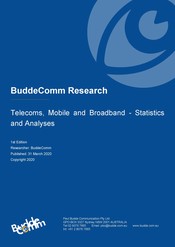2014 Hungary - Telecoms, IP Networks, Digital Media and Forecasts

Last updated: 11 Nov 2014 Update History
Report Status: Archived
Report Pages: 68
Analyst: Henry Lancaster
Publication Overview
This report provides a comprehensive overview of trends and developments in Hungary’s telecommunications market. The report analyses the mobile, internet, broadband, digital TV and converging media sectors. Subjects include:
- Market and industry analyses, trends and developments;
- Facts, figures and statistics;
- Industry and regulatory issues;
- Infrastructure;
- Major Players, Revenues, Subscribers, ARPU, MoU;
- Internet, VoIP, IPTV;
- Mobile Voice and Data Markets;
- Broadband (FttH, DSL, cable TV, wireless);
- Convergence and Digital Media;
- Broadband market forecasts for selective years to 2020.
Researcher:- Henry Lancaster
Current publication date:- November 2014 (13th Edition)
Executive Summary
Popular protests force rejection of tax on internet traffic
Hungary’s telecom regulator has been effective in promoting competition, and has aligned interconnection and access tariffs with the EU average. As in many other markets in the region, the number of fixed-lines, as also fixed-line revenue, has been affected by the changing consumer use of such services and by the trend for fixed-to-mobile substitution. Fixed-line operators have thus looked to broadband internet access and broadband-based services to boost revenue. The economic crisis has also affected telecom revenue, exacerbated by the government’s recent telecom taxes. The attempt to impose a tax on internet data traffic was abandoned in November 2014 following civil demonstrations against it.
The dynamic mobile market is served by three mobile network operators and a growing number of MVNOs. Mobile penetration is relatively high, and though there are fewer opportunities for revenue growth through new subscriber additions, the MNOs have upgraded networks to capitalise on strong consumer demand for mobile data services. Thus future revenue growth is focused on mobile data while operators face stiffening competition and regulated tariff reductions.
Hungary enjoys relatively high internet penetration, with broadband representing the majority of internet connections. There is effective cross-platform competition. The market is led by cable, closely followed by DSL. The regulator has acted to promote competition via LLU. Competition and the demand for bandwidth are pushing the drive for higher speed platforms, and so have encouraged operators to invest in FttX and DOCSIS 3.0. Catering for the large internet user base are useful online services and applications, fostering the development of an internet society, a trend recognised and encouraged by the government through investment and policy.
The competitive digital TV market is continuing to evolve with new bundled service offerings and the ongoing transition to digital broadcasting. Digital TV is available via terrestrial TV, cable TV networks, satellite and IPTV platforms.
This report provides an overview of Hungary’s telecoms and IT market, highlighting regulatory developments, the major operators, fixed-line network infrastructure, and a variety of insightful statistics. It reviews the strong mobile market, covering the major players, voice and data services and the regulatory environment. It also assesses the broadband and digital TV markets, covering market developments and including data, statistics and scenario-based forecasts for fixed broadband penetration to 2020.
Key developments:
Mid Europa Partners to sell Invitel Holdings; government scraps proposed levy on internet traffic; Deutsche Telekom acquires GTS Central Europe; telcos report lower revenue into Q3 2014; new access regulations incorporate fibre and cable infrastructure sharing; National Media and Infocommunication Authority inaugurated to oversee telecoms sector; regulator auctions 450MHz spectrum; multi-spectrum auction in late 2014 boosts mobile broadband capabilities; T-Mobile trials LTE-A; M2M sector gaining traction; smartphones accounting for up to 70% of handset sales; RG Networks launches satellite broadband via Eutelsat; government expands e-payment systems; Maygar Telecom steps up e-health initiatives; Maygar Telekom stops selling cable TV services; DTTV available to 95% of population; UPC cable dominance following purchase of FiberNet assets, regulator market data to September 2014; telco’s financial and operating data for Q3 2014; recent market developments.
Companies and subsidiaries mentioned in this report include:
Magyar Telekom, Invitel, Antenna Hungaria, GTS-Datanet, Telenor Hungary, Vodafone Hungary, UPC Hungary, Hungarotel, FiberNet, Maygar Televizio, TV2.
Data in this report is the latest available at the time of preparation and may not be for the current year
Related Reports
- Hungary - Telecoms, Mobile and Broadband - Statistics and Analyses
- Europe - Mobile Network Operators and MVNOs
- Luxembourg - Telecoms, Mobile and Broadband - Statistics and Analyses
- Montenegro - Telecoms, Mobile and Broadband - Statistics and Analyses
- Denmark - Telecoms, Mobile and Broadband - Statistics and Analyses
- Czech Republic - Telecoms, Mobile and Broadband - Statistics and Analyses
- Greece - Telecoms, Mobile and Broadband - Statistics and Analyses
- Cyprus - Telecoms, Mobile and Broadband - Statistics and Analyses
- Belarus - Telecoms, Mobile and Broadband - Statistics and Analyses
- Austria - Telecoms, Mobile and Broadband - Statistics and Analyses
Share this Report
TMT Intelligence
A platform to scale your intelligence tasks
Monitor critical insights with our AI-powered Market Intelligence Platform gathering and analyzing intelligence in real time. With AI trained to spot emerging trends and detect new strategic opportunities, our clients use TMT Intelligence to accelerate their growth.
If you want to know more about it, please see:
Research Methodology
BuddeComm's strategic business reports contain a combination of both primary and secondary research statistics, analyses written by our senior analysts supported by a network of experts, industry contacts and researchers from around the world as well as our own scenario forecasts.
For more details, please see:
More than 4,000 customers from 140 countries utilise BuddeComm Research
Are you interested in BuddeComm's Custom Research Service?
Hot Topics
News & Views
Have the latest telecommunications industry news delivered to your inbox by subscribing to BuddeComm's weekly newsletter.